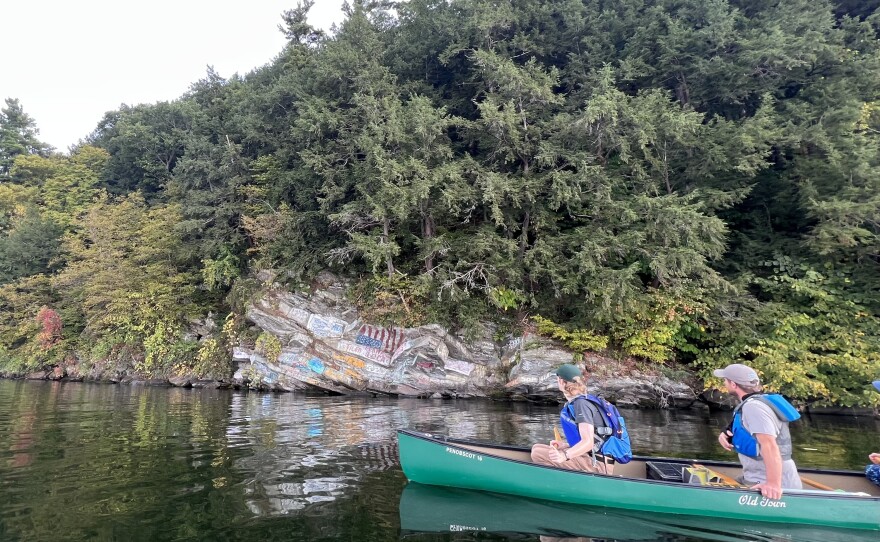A natural landmark on the shore of Saratoga Lake remains one of the few undeveloped areas around the popular vacation destination and a local non-profit wants to keep it that way.
On the eastern shore of Saratoga Lake in the Town of Stillwater, Snake Hill was sculpted by the same geologic and glacial activity that led to the creation of the lake it sits on over hundreds of millions of years.
As he paddles a canoe, Saratoga PLAN Executive Director Rob Davies points to the hill's steep, rocky cliffs.
“Well, my most immediate concern is taking care of the health of Snake Hill,” said Rob Davies.
As the land around Snake Hill is packed with beach houses and second homes, the hill boasts tall evergreen trees. Davies doesn't want to see them cut down.
“So, my most immediate concern is to protect the hemlocks. We’re also in the process of developing a management plan for Snake Hill. We had a public open forum where we invited people to kind of express their opinion on what would they like to see for Snake Hill in the future, especially in terms of public access,” said Davies.
Saratoga PLAN bought a roughly 30-acre plot of land that includes the hill from Stewart Shops for $1 million in 2023.
Since then, the organization has considered a range of potential preservation options.
When options were presented to the public, local residents preferred to restrict development on the hill aside from a few protected trails.
Back on shore, Davies says preservation is a collective effort.
“The soils on Snake Hill are very thin and the resources and the ecosystem of Snake Hill is very sensitive. So, you could love Snake Hill to death very, very easily. And that's what we're not going to allow happen,” said Davies.
Saratoga PLAN board member Lorraine Skibo and says there’s plenty of work to be done even before a trail and management system are created.
“Next is treating some of the invasive species that are deadly to hemlocks. Is important because it's a very unique place, also because it's an isolated hemlock stand really. There's really no other hemlocks around the lake that I know of, and that's important so before and they really also helped to serve, helped to serve, to stabilize some of the soils there too, with their root systems. And so, to invite people up there at all before you can stabilize those things would not be very a good idea,” said Skibo.
The hill's north side features the hemlock trees that Davies wants to protect. The dryer south side is covered in oak and hickory trees. The exposed rock of its western face is covered in graffiti.
Birds of prey and other critters can be found on the hill, too. It gets its name from once being the only place in Saratoga County home to timber rattlesnakes.
For consulting ecologist Michael Gaige, protecting the hill is paramount.
“I call it the crown jewel of Saratoga Lake, right? This is a big, oval shaped lake, it's largely a lot of lowland, and then there's this one sort of unusual landform in it, and it's also one of only two spots on the entire lake that don't have structures on them. So, it'd be great to get actual numbers of user days for recreation, water recreation, on the lake, but it's those users who are the primary beneficiaries of this project, right? That they can go anchor off in front of Snake Hill, or they just, you know, paddle by or zoom by, and it's there as, kind of the one of the, really the last wild remnants of the Saratoga Lake shoreline,” said Gaige.
Conservation assistant Masen Webster grew up in Saratoga County.
“I've seen a lot of stuff change, and I've seen a lot of development come in, in places where some of our, you know, bountiful natural resources that make upstate New York the place that people are moving to, that people are excited to be and disappear and coming back and seeing that there is this institutional support. It's a community. It's, you know, there's been a wide variety of institutions and characters that have come out behind supporting the conservation of snake Hill. So, it's good to see that home can still stay home,” said Webster.
Saratoga PLAN is currently fundraising for its “Protect Snake Hill Forever” campaign to fund the short- and long-term stewardship of the plot.





